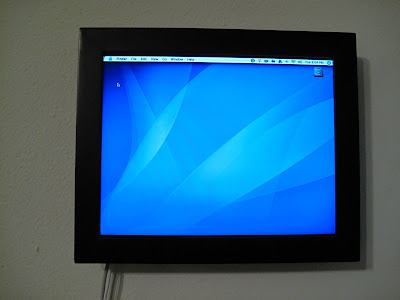Note: The WallMac is also synced with an EyeFi card, so it also can be used for showing live slideshows. But I despise digital picture frames, so this function will be used sparingly.
 I have the GeekTool System Preferences pane running and set up to display weather, time, date, etc. This all pops up automatically on start-up, and runs live on the desktop (not as an application).
I have the GeekTool System Preferences pane running and set up to display weather, time, date, etc. This all pops up automatically on start-up, and runs live on the desktop (not as an application).
















